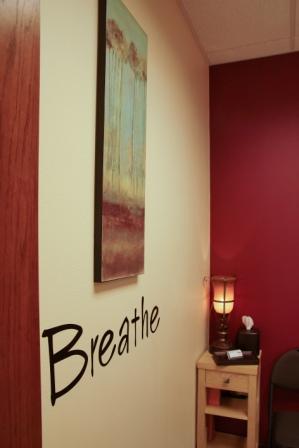Frequently Asked Questions
Where will my West Fargo massage take place? Your massage will take place in a warm, comfortable, quiet room. Soft music will play to help you relax. You will lie on a table designed for your comfort.
Must I undress completely? Most massage and bodywork techniques are commonly performed with the client unclothed. However, it is entirely up to you what you want to wear. You should undress to your level of comfort.
Will the therapist be present when I disrobe? The therapist will leave the room while you undress, relax onto the table, and cover yourself with a clean sheet.
Am I covered during the session? You will be properly draped at all times to keep you warm and comfortable. Only the area being worked on are exposed.
What parts of my body will the therapist massage? A typical session will include work on your back, arms, legs, feet, hands, head, neck, and shoulders. However, you may chose to focus on specific areas of need.
What will the massage or bodywork feel like? A relaxing Swedish massage is a baseline for clients. Your session may start with broad, flowing strokes. This will help calm your nervous system and relax muscle tension. Pressure will increase to relax specific areas and relieve areas of muscular tension. A light oil or lotion allows massaging of your muscles without causing too much friction to the skin. The oil also helps hydrate your skin. If you feel any discomfort, tell your therapist right away. Massage and bodywork are most effective when your body is not resisting.
Communication is Key
What should I do during the massage or bodywork session? Prior to the massage, feel free to ask the therapist any questions about the technique or the upcoming session. During the massage, make yourself comfortable. The therapist will either gently move you or ask you to move during the session (such as lifting your arm). Many people just close their eyes and completely relax. Let your therapist know if/when you need more or less pressure. Feel free to ask questions.
How will I feel after the massage or bodywork session? Most people feel very relaxed. Some experience freedom from long-term aches and pains developed from tension or repetitive activity. After an initial period of feeling slowed down, people often experience increased energy, heightened awareness, and greater productivity which can last for days. Since toxins release from your soft tissues during a massage, you should drink plenty of water following your massage.
What are the benefits of massage and bodywork? Massage and bodywork can help release chronic muscular tension and pain, improve circulation, increase joint flexibility, reduce mental and physical fatigue and stress, promote faster healing of injured muscular tissue, improve posture, and reduce blood pressure. Massage and bodywork is also known to promote better sleep, improve concentration, reduce anxiety and create an overall sense of well-being.
Are there any medical conditions that would make massage or bodywork unwise? Yes. The therapist asks general health questions before the session. It is very important you inform the therapist of any health problems or medications. If you are under a doctor’s care, it is strongly advised you receive a written recommendation for massage or bodywork prior to any session. Your safety is our priority.
What Massage Can Do for You
Experts estimate over ninety percent of disease is stress-related. And perhaps nothing ages us faster, internally and externally, than high stress. Massage is an effective tool for managing this stress, which translates into:
- Decreased anxiety
- Enhanced sleep quality
- Greater energy
- Improved concentration
- Increased circulation
- Reduced fatigue
Massage can also help specifically address a number of health issues. Bodywork can:
- Alleviate low-back pain and improve range of motion.
- Assist with shorter, easier labor for expectant mothers and shorten maternity hospital stays.
- Ease medication dependence.
- Stimulate lymph flow—the body’s natural defense system.
- Exercise and stretch weak, tight, or atrophied muscles.
- Help athletes of any level prepare for, and recover from, strenuous workouts.
- Improve the condition of the body’s largest organ—the skin.
- Increase joint flexibility.
- Lessen depression and anxiety.
- Promote tissue regeneration, reducing scar tissue and stretch marks.
- Pump oxygen and nutrients into tissues and vital organs, improving circulation.
- Reduce adhesions and swelling after surgery.
- Reduce spasms and cramping.
- Relax and soften injured, tired, and overused muscles.
- Release endorphins—amino acids that work as the body’s natural painkiller.
- Relieve migraine pain.


